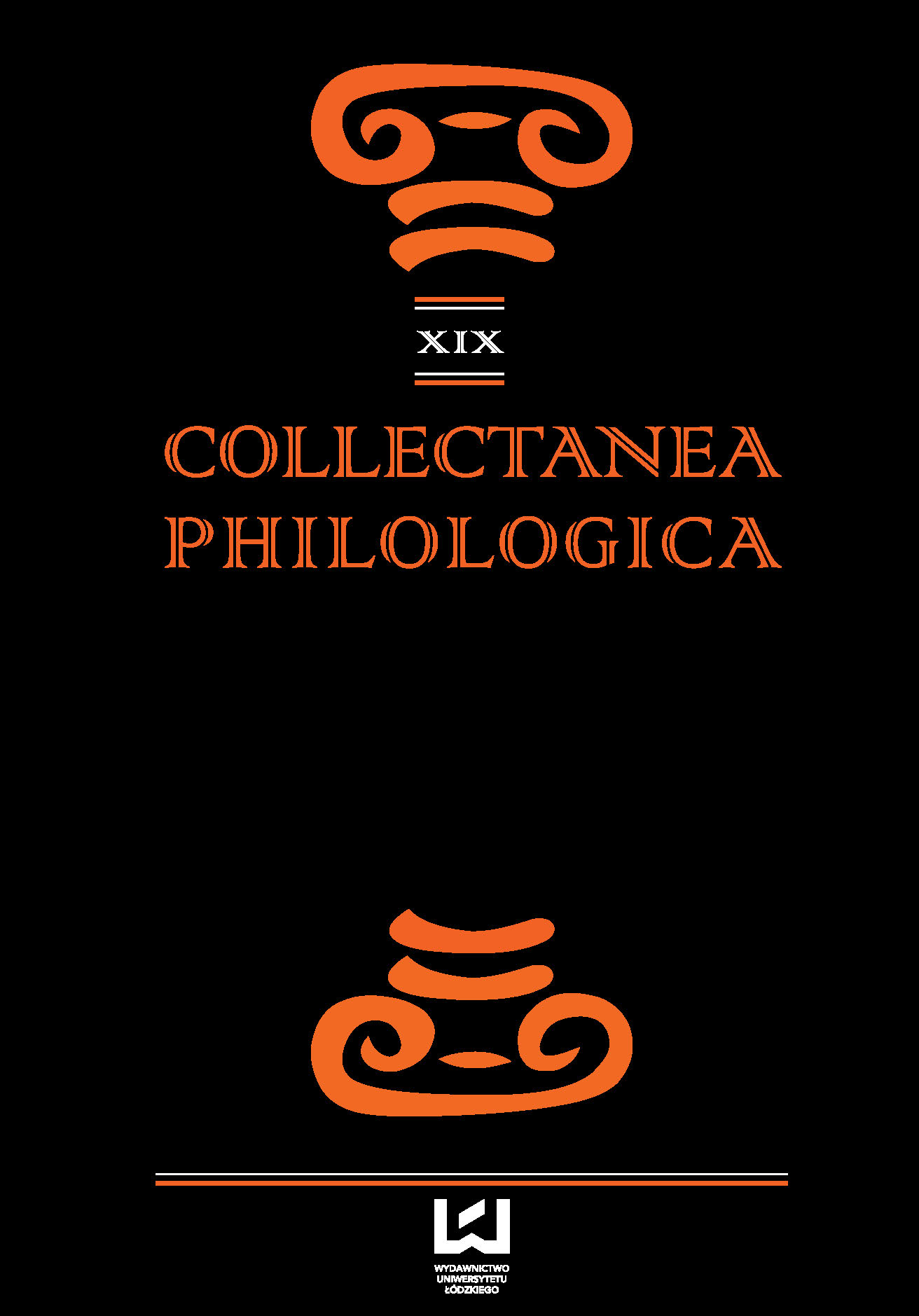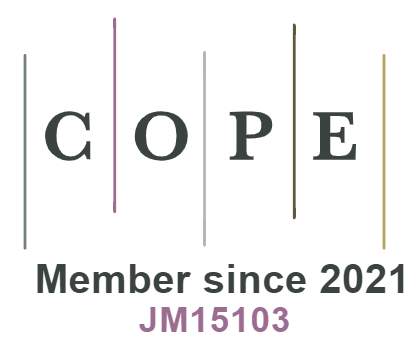Kartagina wyobrażona. Od "Cabirii" Giovanniego Pastrone (1914) do "Gry o tron" (2012)
DOI:
https://doi.org/10.18778/1733-0319.19.10Słowa kluczowe:
Kartagina, historiofotia, recepcja antyku, ‘Cabiria’, ‘Gra o tron’, J.M.W. TurnerAbstrakt
Celem artykułu jest przybliżenie historiofotycznego obrazu wyobrażonego Kartaginy i Kartagińczyków oraz pokazanie, w jaki sposób wymyślone historie bazują na wizerunku antyku istniejącym w zbiorowej świadomości, jakie motywy były inspiracją dla twórców filmu i serialu (motywy historyczne, ale i ważne dla tła np. architektura – w ‘Cabirii’ punicka świątynia Molocha i wszechobecne egipskie zapożyczenia, w ‘Grze o tron’ XIX-wieczne obrazy J.M.W. Turnera), w jaki sposób za pomocą kodu antycznego mówiono o współczesnej ‘Cabirii’ polityce (starcia pacyfistów z nacjonalistami nawołującymi do podboju Afryki), czy wniósł coś do filmu D’Annunzianizm i jak ‘Cabiria’ wpisywała się w nurt historyczno-romański. Szczegółowa analiza dokonana została na dwóch poziomach – filologicznym oraz archeologicznym (obejmującym elementy architektoniczne budujące strukturę urbanistyczną, dekorację rzeźbiarską, wyposażenie wnętrz i przedmioty użytkowe oraz części stroju).
Bibliografia
Ameling, W. (2004). Der Staat und der Krieg. In: S. Peters, ed., Hannibal ad portas. Macht und Reichtum Karthagos. Stuttgart: Theiss, 88–95.
Google Scholar
Amelung, W. (1995). Die Skulpturen des Vatikanischen Museums. Berlin: Reimer.
Google Scholar
Aßkamp, R. et al. (2007). Luxus und Dekadenz. Mainz: Philipp von Zabern.
Google Scholar
Blume, H.-D. (2004). Hanno und das Punische Personal im Poenulus. In: Th. Baier, ed., Studien zu Plautus’ Poenulus, Tübingen: Narr, 203–214.
Google Scholar
Bulas, K. (1935). Corpus Vasorum Antiquorum. Varsovie-Cracovie: Gebethner et Wolff.
Google Scholar
Charles-Picard, G. (1971). Hannibal, transl. Z. Stein. Warszawa: PIW.
Google Scholar
Charles-Picard, G. & C. (1962). Życie codzienne w Kartaginie w czasach Hannibala, transl. I. Wieczorkiewicz. Warszawa: PIW.
Google Scholar
Cintas, P. (1950). Ceramique punique. Paris: Institut des Hautes Études de Tunis.
Google Scholar
Connolly, P. (1998). Greece and Roman at War. London: Greenhill Books.
Google Scholar
Dorgerloh, A. (2013). Competing ancient worlds in early historical film: the example of Cabiria (1914). In: P. Michelakis and M. Wyke, eds., The Ancient World in Silent Cinema. Cambridge: Cambridge University Press, 229–246.
Google Scholar
Dubuisson, M. (1983). L’Image du Carthaginois dans la literature latine. In: E. Gubel, E. Lipiński, B. Servais-Soyez, eds., Studia Phoenicia, vol. I–II («Orientalia Lovaniensia Analecta» 15). Leuven: Peeters, 159–167.
Google Scholar
Fantar, M.H. (1995). Carthage. La cite Punique. Paris: CNRS.
Google Scholar
Fantar, M.H. (2002). Le Tophet de Salammbô. In: C. Briand-Ponsart, S. Crogiez, eds., L’Afrique du Nord Antiquite et Médiévale. Mémoire, identité et imaginaire. Rouen: Presses Universitaires de Rouen, 13–24.
Google Scholar
Fergola, L. (ed.) (2004). Oplontis e le sue ville. Pompei: Flavius.
Google Scholar
Finley, G. (1999). Angel in the Sun. Turner’s Vision of History. Montreal & Kingston – London – Ithaca: McGill – Queen’s University Press.
Google Scholar
Fiorina, P. (2006). Cartagine, teatro dell’immaginario. Su alcune tracce archeologiche nei film muti italiani di ambientazione punica. In: S. Alvisio, A. Barbera, eds., Cabiria&Cabiria, Turin, Milan: Il Castoro/Museo Nazionale del Cinema.
Google Scholar
Flaubert, G. (2008). Salambo, transl. W. Rogowicz. Warszawa: Hachette Livre Polska.
Google Scholar
Franko, G.F. (1996). ‘The Characterization of Hanno in Plautus’ Poenulus’. AJP, 117, 425–452.
Google Scholar
Frazer, A. (ed.) (1998). The Roman Villa: villa urbana. Philadelphia: University of Pennsylvania Press.
Google Scholar
Galpin, F. W. (1929). ‘The Sumerian Harp of Ur, c. 3500 B.C.’. Oxford Journal of Music and Letters, X, 108–123.
Google Scholar
García Morcillo, M. (2015). The East in the West. The Rise and Fall of Carthage in Modern Imagery and Film. In: M. García Morcillo, P. Hanesworth, O. Lapeña Marchena, eds., Imagining Ancient Cities in Film: From Babylon to Cinecittà. New York – London: Routledge, 135–162.
Google Scholar
Grassinger, D. (1991). Römische Marmorkratere. («Monumenta Artis Romanae», XVIII). Mainz: Philipp von Zabern.
Google Scholar
Hamlin, A.D.F. (1916). A History of Ornament. New York: Cooper Square Publ.
Google Scholar
Hardie, P. (2014). The Last Trojan Hero. A Cultural History of Virgil’s Aeneid. London – New York: I.B. Tauris.
Google Scholar
Hoyos, D. (2011). Truceless War. Carthage’s Fight for Survival, 241 to 237 BC. Leiden – Boston: Brill.
Google Scholar
Kunze, M. (ed.) (1995). Kurzführer Pergamonmuseum. Antikensammlung, Vorderasiatisches Museum. Mainz: Philipp von Zabern Verlag.
Google Scholar
Lezzi-Hafter, A. (1988). Der Eretria-Maler, Werke und Weggefahrten. Mainz: Philipp von Zabern.
Google Scholar
Lipiński, E. (2013). Studia z dziejów i kultury starożytnego Bliskiego Wschodu. Kraków: Zakład Wydawniczy »NOMOS«.
Google Scholar
Lipiński, E. (1988). Sacrifices d’enfants a Carthage et dans le monde semitique oriental. In: E. Lipiński, ed., Studia Phoenicia VI. Carthago («Orientalia Lovaniensia Analecta» 26, nr 2). Leuven: Peeters Press, 162–182.
Google Scholar
Mekhitarian, A. (1992). Malarstwo egipskie. Warszawa: Skira.
Google Scholar
Miczka, T. (2009). Kino włoskie. Gdańsk: słowo / obraz terytoria.
Google Scholar
Miles, R. (2011). Hannibal and Propaganda. In: D. Hoyos, ed., A Companion to the Punic Wars. Chichester – Malden: Wiley–Blackwell, 260–279.
Google Scholar
Moscati, S. (1968). Świat Fenicjan, transl. M. Gawlikowski. Warszawa: PWN.
Google Scholar
Niemeyer, H.G. (2004). Mythos und Geschichte, Orient und Okzident. In: S. Peters, ed., Hannibal ad portas. Macht und Reichtum Karthagos. Stuttgart: Theiss, 38–51.
Google Scholar
Pelletier-Hornby, P. (1995). Salammbô: La Carthage de Flaubert. In: Carthage. L’Histoire, sa trace et son écho. Paris: Paris Musées, 138–144.
Google Scholar
Picard, G. (1983–1984). ‘Hannibal hegemon hellénistique’. RSA, 13–14, 75–81.
Google Scholar
Shelby Brown, S. (1992). Late Carthaginian Child Sacrifice and Sacrificial Monuments in their Mediterranean Context. Sheffield: Sheffield Academic Press.
Google Scholar
Śliwa, J. (1970). ‘Egipskie figurki brązowe w Muzeum Narodowym w Krakowie’. Rozprawy i Sprawozdania Muzeum Narodowego w Krakowie, X, 21–37.
Google Scholar
Śliwa, J. (1987). ‘Zabytki egipskie ze zbiorów Muzeum Narodowego w Krakowie, część II’. Studia i materiały archeologiczne 5, 97–217.
Google Scholar
Starks Jr., J.H. (2000). ‘Nullus me est hodie Poenus Poenior: Ballanced Ethnic Humor in Plautus’ Poenulus’. Helios, 27, 163–186.
Google Scholar
Villaronga, L. (1973). Las monedas hispano-cartaginesas. Barcelona: Patrocinado por la Sección Numismática del Círculo Filatélico y Numismático.
Google Scholar
Ward-Perkins, J.B. (1981). Roman Imperial Architecture. Harmondsworth: Penguin Books.
Google Scholar
White, H. (1988). ‘Historiography and historiophoty’. The American Historical Review 93, 1193–1199.
Google Scholar
White, H. (2014). Historiografia i historiofotia, transl. Ł. Zaremba. In: H. White, Przeszłość praktyczna. E. Domańska, ed. Kraków: Towarzystwo Autorów i Wydawców Prac Naukowych UNIVERSITAS, 255–266.
Google Scholar












